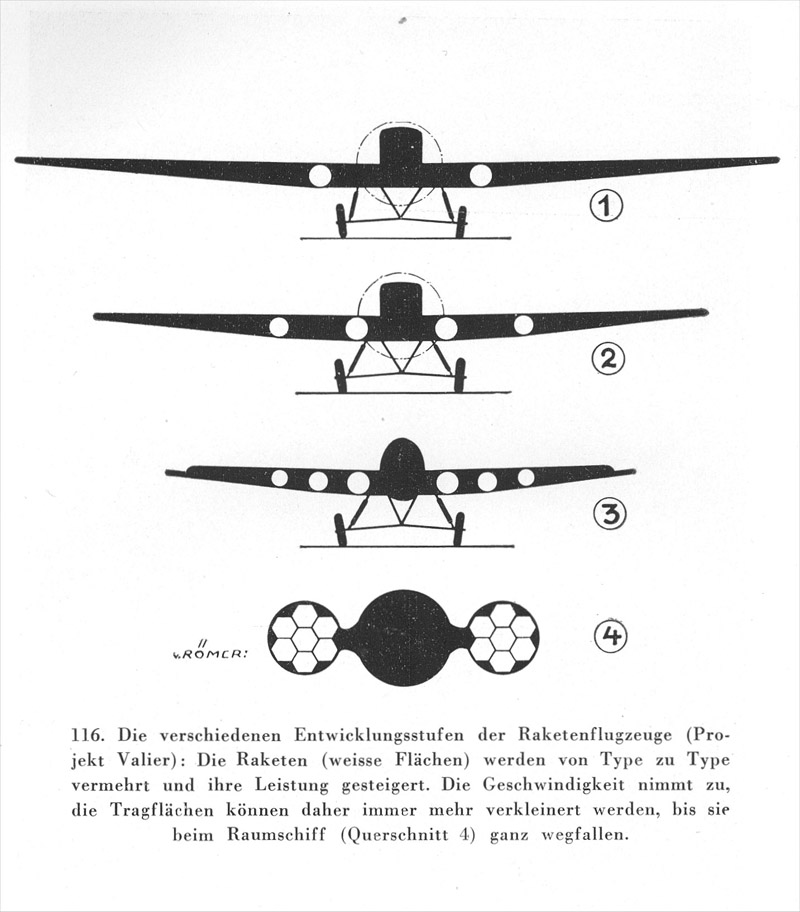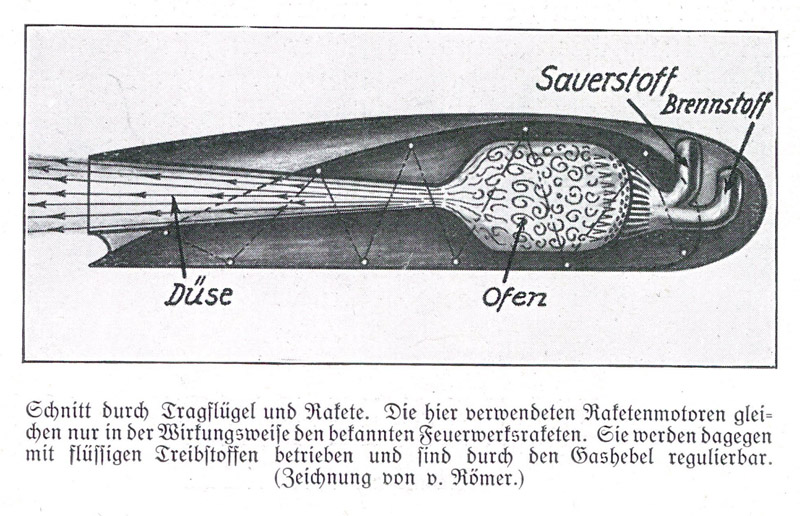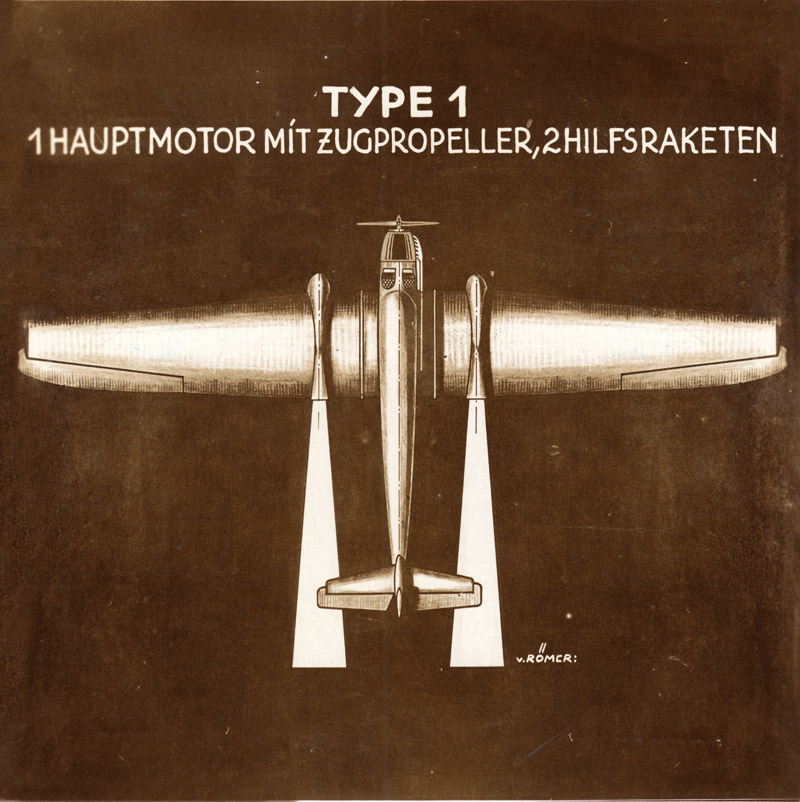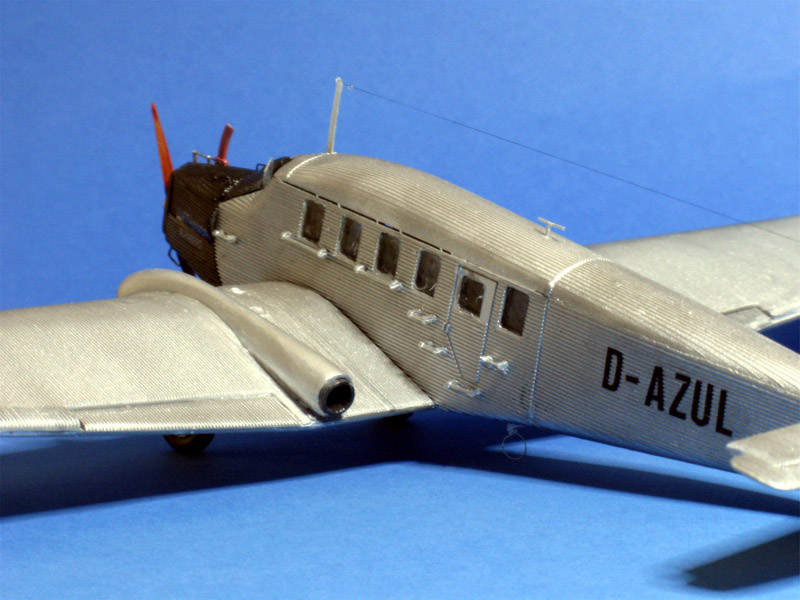|
|
| Max Valier, project 1
of a rocket powered aircraft, based on a Junkers G 24 |
|
VEB Plasticart 1/48 plus scratch |
|
|
 |
 |
| |
|
Original drawings by Max Valier |
| Copies by Karl-Heinz Rohrwild |
| who also
furnished the G 24 kit |
|
 |
|
|
|
|
Max Valier (born 1895 in Bozen - now Bolzano,
Italy) isn't too well known today, maybe only by his first use of a rocket
powered car in 1928 on the Berlin "AVUS" racetrack. Though by this feat rocket
power got into the mind of the public, his real aim was conquering outer space,
a flight to the moon to prove the "Welteistheorie" (lit.: world ice theory). For
the next step, rocket powered aircraft, did have plans, but for realisation he
needed Junkers, who refused support. Cooperation with Hermann Oberth failed too.
But he didn't give up, even when getting into financial trouble. In April 17th
and 18th 1930 he again showed the feasibility of rocket powered cars at Britz
resp. Tempelhof. When trying to light a new fuel combination with a torch
on May 17th 1930 his life came to an abrupt end. |
Hermann Oberth and Konstantin Ziolkowsky are
founders of the theoretical background of space flight, but the motor of
practical invention was Max Valier. When it comes to space flight pioneers his
name isn't to be neclected. For details see separate Max Valier page
|
|
The model: |
|
The first project of a rocket powered was based
on the Junkers G 24. A kit of this aircraft was issued in 1988 (!) by a "people
ownded work" of the east German DDR, markings for a Swiss aircraft. The later
reissue by Revell differed only in the decals, otherwise it was 1:1 "VEB
Plasticart" , its age clearly visible. Thick trailing edges and massive hand
rails being obvious. As a model wouldn't depict a real aircraft
- just show a project - I decided to to
ephasize the model appearance and leave the kit part as they were.
Naturally excepting the rocket pod which were to be made by scratch: |
|
|
|
|
|
|
|
The rocket pods were made of
Polyester putty (usually used for car repair). At first a thin layer
of butter was applied on the appropriate spaces, then Polyester putty was
applied on a generous strip of PVC foil, and this laid upside down on the
wings (exact location marked before). When hard these parts were
removed, a tube in the rear inserted and a second layer of putty in hight of
the pods applied. When hardened sanded to shape. After having carefully
removed the fat the correct position of the pods was marked on the wings and
strips of transparent self adhesive foil applied. After placement of the
pods their contours are cut out and the middle part removed. This opening
got a thin layer of 2K cement, the pods were firmly pressed on and the
overspill removed with a moistened finger. This also prevented gaps. - Ready!
- Otherwise as usual, Decals scratch made.
The model is to be shown in
the Hermann Obert Museum. |
|
|
|
|
|
|


